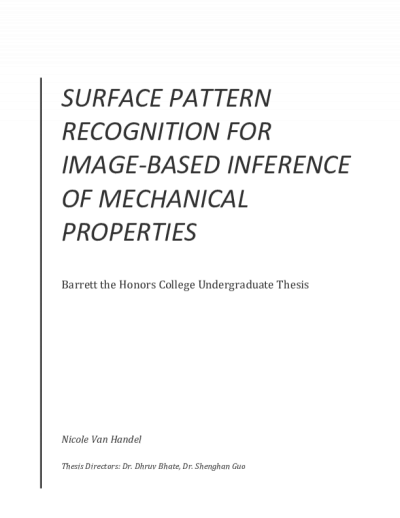3D Printing Biocompatible Polymers for Biomedical Applications

Description
Since their invention in the 19th century, polymers have played an essential role, yet their full potential in biomedicine remains largely untapped. Biocompatible polymers, known for their flexibility, accessibility, and modifiability, hold promise in creating complex biomimetic structures for bioscaffolds and biosensors. 3D printing, an emerging manufacturing technique, enables on-demand production of intricate structures, offering significant potential for personalized medicine and advanced biomedical engineering. This thesis focuses on designing and developing polymer-based bioscaffolds and biosensors using 3D printing. Chapter 1 provides an all-round introduction to common 3D printing techniques and polymeric biomaterials, especially biodegradable polymers. In Chapter 2, a gill-mimicking thermoelectric generator (TEG) was created to harvest body temperature and monitor bio-signals without external power. The out-of-plane geometry is obtained with fused deposition modeling (FDM), which is crucial for effective contact with various curved surfaces. Further improvements in biocompatibility enable the material to be implanted in vivo. Chapter 3 discusses UV-facilitated DIW printing for pelvic organ prolapse (POP) tissue scaffolds, featuring crosslink strategies for native tissue-like mechanical behavior. The double network comprises thiol-ene UV-initiated chemical bonds and alkaline-induced crystal regions as physical crosslink nodes. The crosslink density affects the degradation rate of the scaffold, enabling a slow degradation behavior beneficial to the recovery of the injured tissue. Chapter 4 presents a novel artificial artery design with varying moduli and natural polymers for bypass surgeries. The inner and outer layers of the conduit were stretched successively under different strains, endowing the vessel with varying moduli. Natural polymers were utilized to achieve low cytotoxicity and promote adequate cell adhesion. Additionally, the gelation behavior and the ink composition suitable for extrusion with a DIW platform were thoroughly studied. Image analysis, finite element analysis, and machine learning were employed to substantiate the findings regarding mechanical properties, extrusion quality, and printing fidelity in Chapters 3 and 4. This combination of computer-assisted analysis with experimental results enhances the robustness of the studies. Lastly, Chapter 5 provides an outlook and perspectives on the applications of biocompatible polymeric materials manufactured by 3D printing in the field of health applications.
Date Created
The date the item was original created (prior to any relationship with the ASU Digital Repositories.)
2024
Agent
- Author (aut): Zhu, Yuxiang
- Thesis advisor (ths): Li, Xiangjia
- Committee member: Vernon, Brent
- Committee member: Bhate, Dhruv
- Committee member: Guo, Shenghan
- Committee member: Song, Kenan
- Publisher (pbl): Arizona State University

